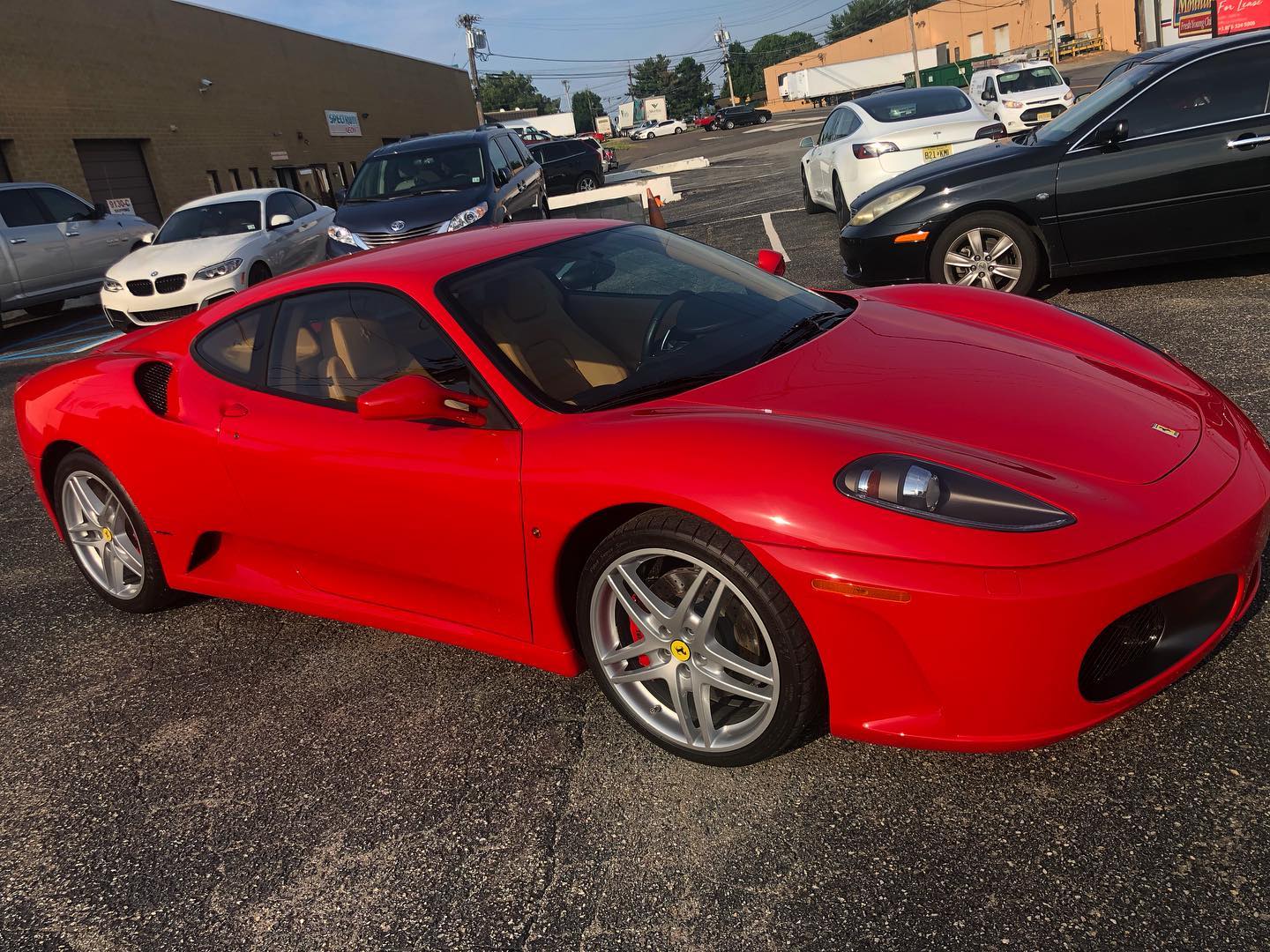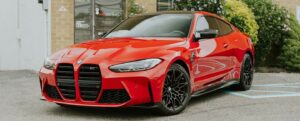Paint protection solutions are used to maintain a vehicle’s appearance and value. Two popular options are ceramic coating and Paint Protection Film (PPF). In this article, we will compare both products in detail to help you choose the best fit for your car.
What is PPF?
PPF is a clear, thermoplastic urethane film applied to a vehicle’s exterior. It acts as a protective layer and shields the paint from various forms of damage.
Benefits of PPF
Strong Protection: PPF guards your car’s paint from rocks, debris, and minor scratches. It works well on high-impact areas like the hood and fenders.
Self-Healing: Many PPF products can fix small scratches on their own when exposed to heat. This keeps your car looking smooth and clean.
Long-Lasting: Quality PPF can protect your car for up to 10 years. It resists yellowing and UV damage, maintaining its clarity over time.
Increase Resale Value: PPFs can maintain factory finish for longer and increase resale value.
Customizable: PPF comes in different finishes like gloss or matte. Some brands offer colored PPF for a unique look.
Drawbacks of PPF
High Cost: PPF costs more than other paint protection options, especially for full-car coverage.
Tricky Installation: Applying PPF requires skill. Poor installation can lead to bubbles or visible seams.
Visible Edges: The edges of PPF may be slightly visible, especially on dark cars.
Maintenance Needs: While low-maintenance, PPF needs care to prevent edge lifting. Some cleaning products may not suit PPF.
Thickness: PPF adds a slight thickness to the paint. This may be noticeable in some light conditions.
What is Ceramic Coating?
Ceramic coating is a liquid polymer applied to a vehicle’s exterior. It chemically bonds with the factory paint and creates a protective layer.
Benefits of Ceramic Coating
Chemical Protection: Ceramic coating shields your car from UV rays, acid rain, and other harmful substances.
Water-Repellent: The hydrophobic nature of the coating makes water bead up and roll off. It makes it easier to keep your car clean.
Increased Gloss: Ceramic coating gives your car a deep shine that enhances the paint color.
Easy Care: With ceramic coating, you need to wash your car less often. It also makes washing quicker.
Versatile Use: You can apply ceramic coating to paint, wheels, glass, and plastic trim.
Drawbacks of Ceramic Coating
Limited Physical Protection: Ceramic coating doesn’t protect well against rock chips or scratches.
Expert Application Needed: A professional should apply the coating for the best result. DIY attempts may lead to uneven coverage.
Shorter Lifespan: Ceramic coating usually lasts 2-10 years depending on the product and installer.
Special Care: You have to use pH-neutral products to wash a ceramic-coated car.
No Spot Repairs: You may have to remove and reapply the whole coating if damaged.
Detailed Comparison: Ceramic Coating vs PPF
Protection Level
- PPF: Offers superior protection against physical damage. Can absorb impacts from rocks and debris.
- Ceramic Coating: Provides great protection against chemicals but offers minimal resistance to physical impacts.
Appearance
- PPF: Nearly invisible when properly installed. Preserves the original paint look.
- Ceramic Coating: Enhances paint gloss and depth, giving a “wet” look.
Durability
- PPF: Can last more than 10 years with proper care.
- Ceramic Coating: Typically lasts 2-10 years before needing reapplication.
Maintenance
- PPF: Relatively low maintenance. Can be washed and waxed like normal paint.
- Ceramic Coating: Requires careful maintenance. Needs specific pH-neutral products for cleaning.
Cost
- PPF: Higher upfront cost, especially for full-body applications.
- Ceramic Coating: Lower initial cost but may require more frequent reapplication.
Application Process
- PPF: Complex installation requiring precision and expertise.
- Ceramic Coating: Simpler application process but still requires proper surface preparation.
Coverage
- PPF: Often applied to high-impact areas (front bumper, hood, fenders).
- Ceramic Coating: Typically applied to the entire vehicle.
Self-Healing
- PPF: Many modern PPFs have self-healing properties.
- Ceramic Coating: Does not offer self-healing capabilities.
Removability
- PPF: Can be removed without damaging the underlying paint.
- Ceramic Coating: Permanent; can only be removed by polishing.
Customization
- PPF: Available in various colors and finishes for customization.
- Ceramic Coating: Limited to enhancing the existing paint color.
Choosing the Right Protection for Your Vehicle
Choosing the right protection depends on your specific needs and environment. Here are the factors you need to consider.
Consider PPF if:
- Your vehicle frequently encounters road debris or rock chips
- You want the highest level of physical paint protection
- You’re willing to invest more upfront for long-term protection
- You desire a removable solution
Consider Ceramic Coating if:
- You want enhanced gloss and easier cleaning
- Chemical resistance is your primary concern
- You prefer a more affordable initial investment
- You want full-body protection without the high cost of full-body PPF
Use Both
- For ultimate protection, consider combining both:
- Apply PPF to high-impact areas (front bumper, hood, fenders)
- Apply ceramic coating over the PPF and the rest of the vehicle
- This approach provides maximum physical and chemical protection while enhancing the overall appearance.
Final Verdict
Both ceramic coating and PPF offer great protection. Choose the one that fits your needs, budget, and priorities. PPF provides unmatched physical protection, while ceramic coating offers superior chemical resistance and in.
At AODetail, we specialize in both ceramic coating and PPF installations. We only use top-tier PPF and Ceramic coating products. Our expert technicians can help you determine the best protection strategy for your vehicle. Contact us at 856-906-2454 or visit our website to book an appointment today!





